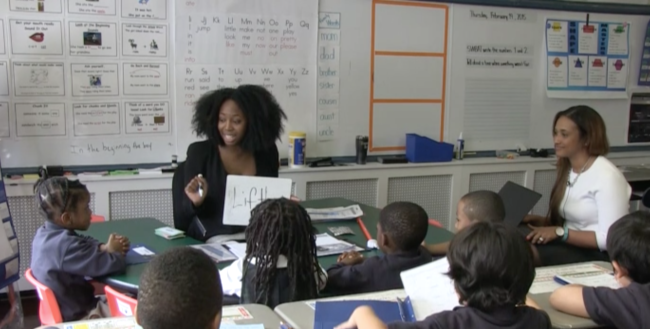08.24.15More About Juliana Worrell’s Amazing Coaching Video
 Last week I posted about a video of Juliana Worrell coaching Ashley Roberts.
Last week I posted about a video of Juliana Worrell coaching Ashley Roberts.
There were a lot of remarkable things about the clip: yes, the great coaching Juliana provided, but even more compellingly (and importantly, I tried to say), a great culture of openness and teamwork between Juliana and Ashley. My primary takeaway from TNTP’s Mirage report is that the “culture” in which teacher development occurs is the driver of results.
Over the weekend, Juliana posted a response via social media that was even more telling both about how she ensured that the coaching went so well and about how she thinks of culture.
“I have found that the key to setting this up is in the meetings prior to observation. Ashley and I had already discussed what it would look like if I were to intervene, so we were both on the same page!”
In other words, what we see in the video is the result of a mutual agreement between Ashley and Juliana. Imagine the power of agreeing in advance on the goal (what Ashley is trying to achieve), on the ways an observer will offer feedback (deciding, say, that she would raise her hand), and the range of ways Ashley could respond. The trust, in other words, was being built even before Juliana walked into the room.
Thanks again, Juliana and Ashley!

Another approach is to rehearse teaching with peers ahead of teaching with children so that teachers & school leaders are planning together, practicing together, someone enacts the lesson, and then reflecting together, so that the whole feedback process can happen before the lesson and after the lesson.
Some feedback (perhaps quick conferring) could happen during the lesson, but this gives teachers and school leaders a chance, before they teach children, a chance to come to coherence around what do we mean by this kind of teaching?
Thanks, David. Great point. Most feedback comes after a teacher teaches, but feedback and practice BEFORE the lesson is actually a lot more productive. Some very successful schools I know use exactly this approach. Cheers, Doug